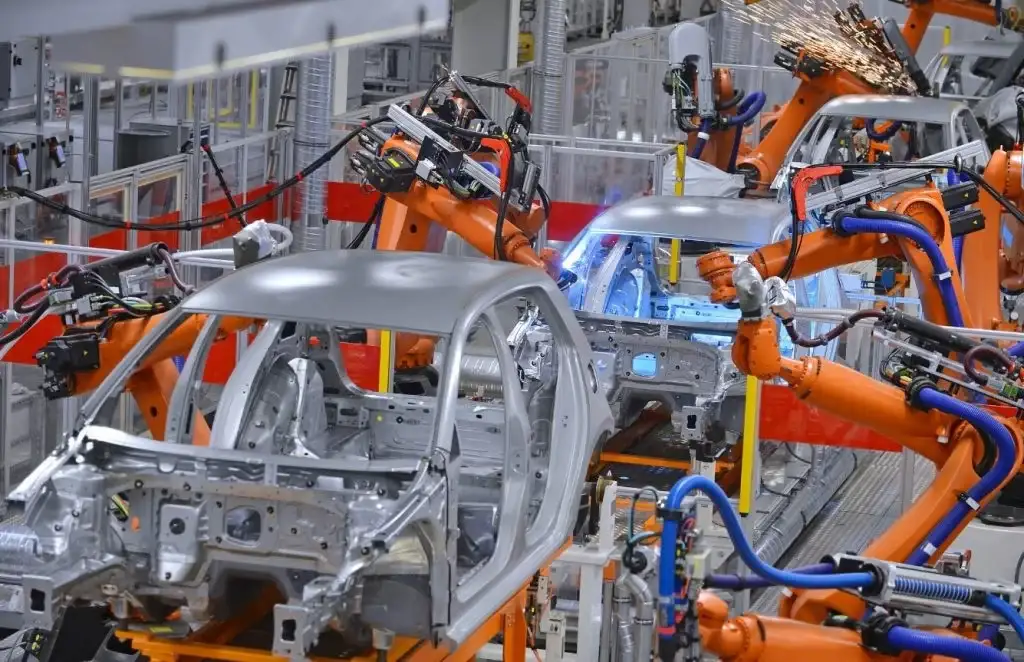Introduction to Gear Manufacturing
Gears, those essential cogs in the machinery of modern industry, are fundamental to countless applications, from the humble bicycle to the complex systems in aerospace. Ensuring their precision and quality is not just a matter of efficiency but also of safety and reliability. The journey of manufacturing these critical components involves numerous steps, each pivotal in determining the final product’s quality.
Challenges in Traditional Gear Quality Control
In the old days, inspecting gears was a job for skilled human eyes, magnifying glasses, and a lot of patience. But let’s be honest—human inspection, no matter how diligent, is prone to errors. Imagine trying to catch every tiny defect in thousands of gears every day! It’s like finding a needle in a haystack, over and over again. This method often results in inconsistencies, leading to defective gears slipping through the cracks. And when defective gears make their way into products, the costs can be staggering, not to mention the potential safety hazards.
The Evolution of Quality Control in Gear Manufacturing
Quality control in gear manufacturing has come a long way. Traditionally, it relied heavily on manual processes that were not only time-consuming but also left a lot of room for human error. However, as technology evolved, so did our methods of ensuring quality. The shift towards automation marked a significant leap forward, revolutionizing how we detect and address defects in gear production.
What is Automated Visual Inspection (AVI)?
Automated Visual Inspection (AVI) is like having a tireless, super-efficient inspector that never misses a beat. It’s a technology that uses advanced imaging and machine learning algorithms to check for defects in gears. Think of it as giving your gear factory a pair of eagle eyes that can scrutinize every gear with pinpoint accuracy.
Key Components of AVI Systems
AVI systems are equipped with high-resolution cameras that capture detailed images of each gear. These images are then analyzed using sophisticated software to detect any anomalies or defects. The system comprises:
- High-Resolution Cameras: To capture precise images.
- Machine Learning Algorithms: To analyze and identify defects.
- Real-Time Monitoring: To provide instant feedback and corrective measures.
How Automated Visual Inspection Works
AVI systems start by capturing images of gears as they pass through the production line. These images are then fed into a computer system where machine learning algorithms compare them to a database of known defects and standards. This comparison allows the system to identify any deviations or flaws in real-time.
Imaging Technology in AVI
The heart of AVI lies in its imaging technology. High-resolution cameras capture minute details, enabling the system to detect even the smallest imperfections that might go unnoticed by the human eye.
Data Analysis and Machine Learning Algorithms
Once the images are captured, they are processed using machine learning algorithms that can identify patterns and detect anomalies. These algorithms are trained on vast datasets of gear images, allowing them to recognize a wide range of defects.
Real-time Monitoring and Feedback
One of the key advantages of Automated Visual Inspection is its ability to provide real-time feedback. This means that any defects detected can be addressed immediately, reducing the risk of defective gears progressing further down the production line.
Benefits of Automated Visual Inspection for Gear Manufacturing
The shift to Automated Visual Inspection offers numerous benefits that can revolutionize gear manufacturing.
Increased Accuracy and Precision
Automated Visual Inspection systems are capable of detecting defects with a level of accuracy and precision that far surpasses manual inspection. This ensures that every gear meets the highest standards of quality.
Consistent Quality Assurance
With Automated Visual Inspection, you get consistent quality control, day in and day out. Unlike human inspectors who might have an off day, AVI systems maintain the same level of scrutiny with every inspection.
Cost Efficiency and Productivity Boost
By catching defects early and reducing the need for rework or recalls, AVI can significantly lower production costs. Additionally, the increased efficiency can lead to higher productivity, as fewer defective gears mean less downtime and fewer interruptions in the production process.
Types of Defects Detected by AVI in Gear Manufacturing
AVI systems are adept at identifying various types of defects that can affect the performance and durability of gears.
Surface Defects
These include scratches, cracks, and pits that can compromise the integrity of the gear.
Dimensional Inaccuracies
Even slight deviations in the dimensions of a gear can affect its performance. Automated Visual Inspection systems can detect these inaccuracies with high precision.
Structural Flaws
AVI can also identify structural flaws such as misalignments or material inconsistencies that might not be visible on the surface but can impact the gear’s functionality.
Implementing Automated Visual Inspection in Gear Manufacturing: Steps and Considerations
Transitioning to an Automated Visual Inspection system involves several steps and careful planning.
Initial Assessment and Planning
The first step is to assess your current quality control processes and identify areas where Automated Visual Inspection could be beneficial. This involves a thorough analysis of your production line and identifying potential integration points for the Automated Visual Inspection system.
System Integration
Integrating an Automated Visual Inspection system into your existing production line requires careful planning and execution. This includes setting up the necessary hardware and software, as well as ensuring that the system can communicate effectively with other parts of the production process.
Training and Maintenance
Once the system is in place, it’s essential to train your staff on how to use and maintain it. Regular maintenance is also crucial to ensure that the system continues to operate at peak efficiency.
Case Studies: Success Stories of AVI in Gear Manufacturing
Several industries have successfully implemented Automated Visual Inspection systems, leading to significant improvements in quality and efficiency.
Automotive Industry
In the automotive industry, where precision is paramount, Automated Visual Inspection systems have been used to ensure that gears meet the highest standards of quality. This has led to reductions in recalls and improvements in vehicle performance and reliability.
Aerospace Sector
The aerospace sector, which demands the highest levels of quality and precision, has also benefited from Automated Visual Inspection systems. By ensuring that gears are free from defects, Automated Visual Inspection has helped to improve the safety and reliability of aircraft.
Heavy Machinery Production
In the production of heavy machinery, where gears are subjected to extreme stresses, Automated Visual Inspection systems have been used to ensure that these components can withstand the rigors of their applications. This has resulted in fewer breakdowns and longer lifespans for machinery.
Challenges and Limitations of Automated Visual Inspection
While Automated Visual Inspection offers many benefits, there are also some challenges and limitations to consider.
Technological Barriers
Implementing Automated Visual Inspection can be complex and may require significant technological upgrades to your production line.
Initial Investment Costs
The upfront cost of implementing an Automated Visual Inspection system can be high. However, the long-term savings in terms of reduced defects and increased efficiency can outweigh these initial expenses.
Managing False Positives
One potential drawback of AVI systems is the risk of false positives, where the system identifies a defect that is not actually present. This can lead to unnecessary rework and increased production costs.
Future Trends in Gear Manufacturing and Automated Visual Inspection
The future of gear manufacturing and Automated Visual Inspection looks promising, with several exciting trends on the horizon.
Advances in Imaging Technology
Improvements in imaging technology will enable Automated Visual Inspection systems to detect even smaller defects with greater accuracy, further enhancing the quality of gears.
Integration with IoT and Smart Manufacturing
The integration of Automated Visual Inspection systems with the Internet of Things (IoT) and smart manufacturing technologies will enable real-time data sharing and analytics, leading to more efficient and effective quality control processes.
Predictive Maintenance and AI
Advances in artificial intelligence and predictive maintenance will allow Automated Visual Inspection systems to not only detect defects but also predict when and where they are likely to occur, enabling manufacturers to take proactive measures to prevent them.
Comparing AVI with Other Quality Control Methods
While Automated Visual Inspection offers many advantages, it’s important to consider how it compares to other quality control methods.
Manual Inspection vs. AVI
Compared to manual inspection, Automated Visual Inspection offers greater accuracy, consistency, and efficiency. However, it also requires a higher initial investment and more advanced technological infrastructure.
Ultrasound and X-ray Techniques
Other non-destructive testing methods, such as ultrasound and X-ray, can also be used to detect defects in gears. However, these methods can be more expensive and may not be as effective at detecting surface defects as AVI.
Laser Scanning and 3D Imaging
Laser scanning and 3D imaging technologies offer detailed analysis of gear dimensions and can complement Automated Visual Inspection systems. These methods are particularly useful for detecting dimensional inaccuracies and structural flaws.
The Role of Human Operators in Automated Systems
While Automated Visual Inspection systems can automate many aspects of quality control, human operators still play a crucial role.
Bridging the Gap Between Automation and Human Insight
Human operators are essential for interpreting the results of AVI systems and making decisions about how to address any defects that are detected. Their expertise and insight are invaluable in ensuring that the system operates effectively.
Enhancing Skills for a High-tech Workforce
As technology continues to evolve, it’s important to invest in training and development to ensure that your workforce has the skills needed to operate and maintain advanced Automated Visual Inspection systems.
Environmental and Economic Impacts of Automated Visual Inspection in Gear Manufacturing
Implementing AVI systems can have significant environmental and economic benefits.
Reducing Waste and Resource Consumption
By detecting defects early and reducing the need for rework, AVI systems can help to minimize waste and reduce resource consumption.
Economic Advantages for Manufacturers
The cost savings associated with reduced defects and increased efficiency can lead to significant economic benefits for manufacturers, helping them to remain competitive in a challenging market.
Conclusion: The Future of Gear Manufacturing Quality Control
In conclusion, Automated Visual Inspection represents a significant advancement in gear manufacturing quality control. By providing greater accuracy, consistency, and efficiency, AVI systems can help manufacturers to produce high-quality gears more effectively and cost-efficiently. As technology continues to evolve, the future of gear manufacturing looks bright, with exciting new developments on the horizon. For further inquiries or a demo, you can Contact Trident Information Systems. Stay ahead of the innovation curve! Follow our LinkedIn page for the latest insights and updates on how VIS are revolutionizing Automotive industry.
FAQs
1. What are the main benefits of AVI for gear manufacturing? Automated Visual Inspection offers increased accuracy, consistent quality assurance, and significant cost savings by reducing defects and enhancing productivity.
2. How does AVI improve the quality of gears? AVI systems use advanced imaging and machine learning to detect even the smallest defects, ensuring that each gear meets the highest quality standards.
3. Are there any drawbacks to using AVI in gear manufacturing? The main drawbacks include the high initial investment cost and the potential for false positives, which can lead to unnecessary rework.
4. Can AVI be integrated with existing manufacturing systems? Yes, AVI systems can be integrated with existing manufacturing systems, but it requires careful planning and technological upgrades.
5. What future advancements can we expect in gear manufacturing quality control? Future advancements may include enhanced imaging technology, integration with IoT for real-time data sharing, and predictive maintenance capabilities driven by artificial intelligence.



